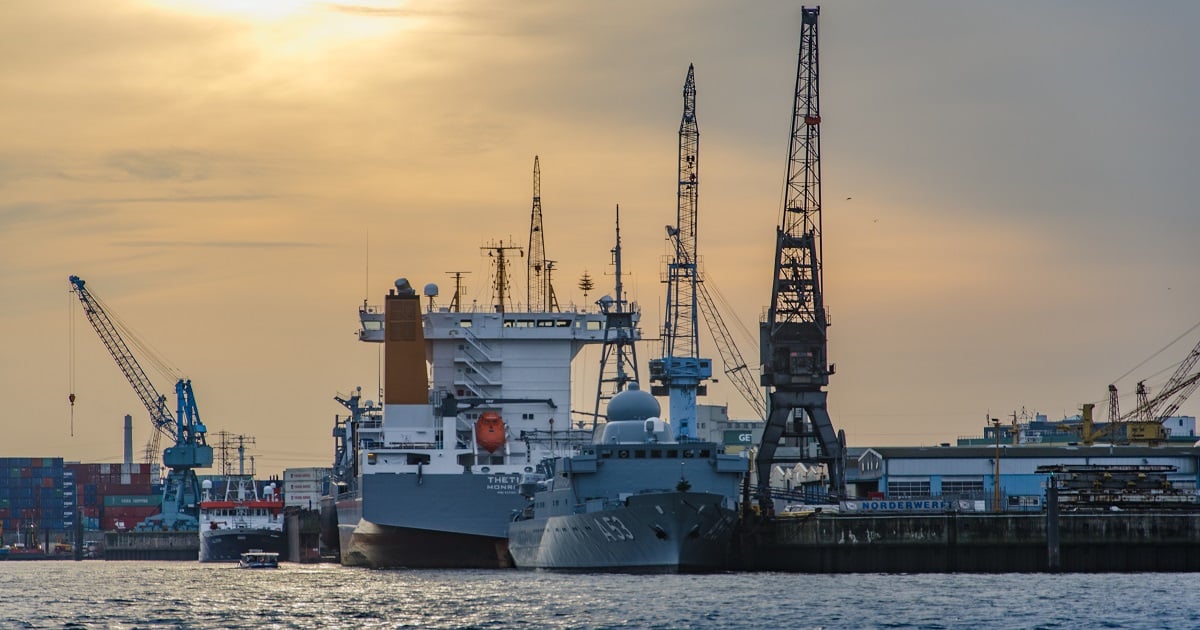Maritime Transportation System and Traffic Engineering
A special issue of Applied Sciences (ISSN 2076-3417). This special issue belongs to the section "Transportation and Future Mobility".
Deadline for manuscript submissions: closed (22 April 2022) | Viewed by 31888

Special Issue Editors
Interests: intelligent navigation for surface vehicles; path planning; path following; motion control; networked control algorithm
Special Issues, Collections and Topics in MDPI journals
Interests: unmanned surface vehicle swarm control; embedded systems; power electronics technology; artificial intelligence
Special Issues, Collections and Topics in MDPI journals
Interests: maritime traffic safety; risk assessment; intelligent ships; collision avoidance decision making
Special Issues, Collections and Topics in MDPI journals
2. Hubei Key Laboratory of Inland Shipping Technology, Wuhan 430063, China
3. National Engineering Research Center for Water Transport Safety, Wuhan University of Technology, Wuhan 430063, China
Interests: transportation engineering; ship traffic flow modeling and simulation
Special Issue Information
Dear Colleagues,
Maritime transportation system and traffic engineering play vital roles in the domain of the shipping industry. Maritime transportation mainly focuses on the navigational safety and efficiency enhancement of the navigation of vessels all across the world. During the past several decades, with the rapid development of automation control and information technology, especially with the emerging autonomous navigation, the research fields and contents of the maritime transportation system and traffic engineering have been greatly extended.
Probing into the aspects of maritime transportation system and traffic engineering, including the vessel traffic flow, the vessel behavior, the safety assessment of the maritime traffic engineering, the ship routing and the vessel traffic systems, their corresponding theories and technologies of are being updated impressively.
This Special Issue of Applied Sciences aims to target the above opportunities and challenges. Researchers from both academia and industry are invited to submit unpublished research work related to the novel theory and technology of the maritime transportation system and traffic engineering. Meanwhile, original researches related to the autonomous navigation, the heterogeneous traffic flow, the intelligent control, the traffic accident prevention, the vessel traffic simulation, etc. are strongly welcomed for publication.
Prof. Dr. Yong MaDr. Zhouhua Peng
Dr. Jinfen Zhang
Dr. Le Qi
Guest Editors
Manuscript Submission Information
Manuscripts should be submitted online at www.mdpi.com by registering and logging in to this website. Once you are registered, click here to go to the submission form. Manuscripts can be submitted until the deadline. All submissions that pass pre-check are peer-reviewed. Accepted papers will be published continuously in the journal (as soon as accepted) and will be listed together on the special issue website. Research articles, review articles as well as short communications are invited. For planned papers, a title and short abstract (about 100 words) can be sent to the Editorial Office for announcement on this website.
Submitted manuscripts should not have been published previously, nor be under consideration for publication elsewhere (except conference proceedings papers). All manuscripts are thoroughly refereed through a single-blind peer-review process. A guide for authors and other relevant information for submission of manuscripts is available on the Instructions for Authors page. Applied Sciences is an international peer-reviewed open access semimonthly journal published by MDPI.
Please visit the Instructions for Authors page before submitting a manuscript. The Article Processing Charge (APC) for publication in this open access journal is 2400 CHF (Swiss Francs). Submitted papers should be well formatted and use good English. Authors may use MDPI's English editing service prior to publication or during author revisions.
Keywords
- maritime transportation system
- maritime traffic engineering
- marine traffic risk assessment and simulation
Benefits of Publishing in a Special Issue
- Ease of navigation: Grouping papers by topic helps scholars navigate broad scope journals more efficiently.
- Greater discoverability: Special Issues support the reach and impact of scientific research. Articles in Special Issues are more discoverable and cited more frequently.
- Expansion of research network: Special Issues facilitate connections among authors, fostering scientific collaborations.
- External promotion: Articles in Special Issues are often promoted through the journal's social media, increasing their visibility.
- e-Book format: Special Issues with more than 10 articles can be published as dedicated e-books, ensuring wide and rapid dissemination.
Further information on MDPI's Special Issue policies can be found here.








